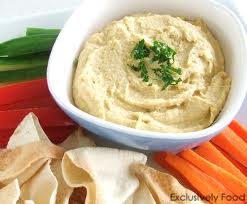There’s no doubt that breakfast is the clear winner when it comes to ranking the importance of meals. Breakfast literally means “breaking the fast” of the night, as it’s the first meal you will eat after a night’s sleep. Breakfast also sets the stage for the rest of the day and is a key factor in helping you stay on track with your health and fitness goals. Just to mention a few reasons, the right morning meal can help with weight loss by revving the metabolism, can jump-start the brain, and stabilize blood sugar to control cravings. Research shows that regular breakfast eaters tend to be leaner and more successful at losing weight—and keeping it off—when they eat breakfast. So whether you’re too busy or just not hungry in the morning, here are 5 top breakfast ideas that are nutrient rich and quick to prepare to help ensure your day kicks off right:
If you’re not a breakfast person, ease yourself into it by sipping on a smoothie throughout the morning to start your day with vitamins and nutrients. Adding a protein powder (for example whey, hemp, or spirulina) will keep you satiated longer and ward off cravings. The greens can be in the form of a green superfood powder (my favorite is Amazing Grass), or a handful of fresh spinach or kale. The greens are detoxifying and help stabilize blood sugar.
Ingredients:
- 1 cup unsweetened coconut milk
- 2 cups baby spinach or baby kale or green powder
- 1 frozen banana
- 2 tablespoons almond butter
- 2 teaspoons organic vanilla extract
- 1/4 cup (1 scoop) protein powder
- 1 cup ice (optional)
Directions: Combine all ingredients in a blender and blend until smooth.
Greek yogurt is all the rage right now and right fully so. Creamy and decadent, it’s an indulgence without the guilt. Packed with 30% protein and 20% bone-building calcium, making it an ideal food for breakfast or snack. Layer Greek yogurt with a high fiber cereal or granola and berries for a satisfying morning meal.
3. Eggs and Avocado
Eggs are a great weight loss food. The secret lies in their ability to keep you full much longer than fat or carbohydrates. They are loaded with vitamins, minerals, high quality proteins, good fats. Eggs also contain small amounts of almost every vitamin and mineral required by the human body. While the whites are mostly protein, the nutrients are all found in the yolks. A whole egg is a perfect superfood. For breakfast try two eggs any style with avocado on sprouted grain toast.
4. Oatmeal
Oatmeal can help you lose weight in two ways: first, it is high in fiber, which means it will keep you fuller longer. Second, since oatmeal is a complex or slow-release carbohydrate it will keep your blood sugar stable. According to recent research, a breakfast of oatmeal eaten 3 hours before exercise can help you burn more fat due to lower blood sugar levels.
Try a breakfast burrito full of heart-friendly monounsaturated fats. Fill an Ezekiel wrap with sliced avocado, scrambled eggs, brown rice, beans, and a splash of salsa. Use your imagination and get creative with the ingredients! This balanced meal will keep you satisfied and help you consume less calories for the entire day.








